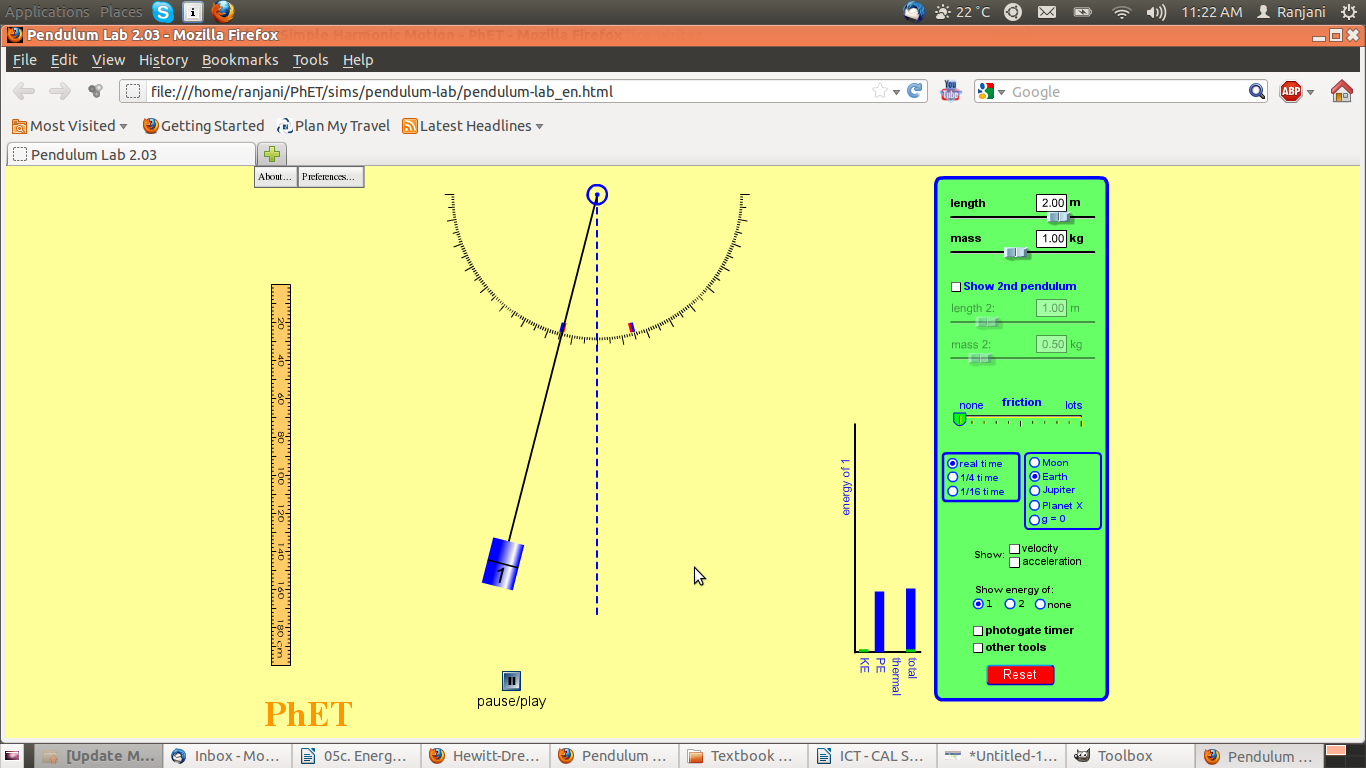Toer energy activity 3
Activity Name
Energy conversion
Objectives
- To study the motion of a simple pendulum
- To observe the different factors on which the motion of a simple pendulum depends
- Develop an understanding that gravity is a conservative force
Method
Time
Materials
Steps
- Observe a simple pendulum
- Use the PhET simulation Pendulum Lab.
For this we will need to open an application called PhET on the computer. You can find PhET under Applications> Education> Science. PhET is an educational resource that contains computer demonstrations of experiments and activities. When we click on Play with sims – it will open simulations in various subjects. We will click on Physics and scroll down to the simulation on Pendulum Lab. When we want to open a simulation, we click on the green rectangle which says “Run Now”.
Discussion questions

- Notice where the pendulum is – is it higher, lower or at the same level as the central position?
- Notice the graph – what are the two variables on the bar chart?
- What do you think will happen to the pendulum next?
- Notice where the pendulum is – has it moved? What can you say about its movement?
- Notice the graph – what are the variables on the bar chart?
- What are the values of PE and KE as compared to total energy?
- Notice where the pendulum is – has it moved? Is it higher or lower than the central position?
- Did you notice anything about the speed of the bob as it moves from one extreme position to another?
- Notice the graph – what are the variables on the bar chart?
- What has happened to the values of the KE and PE as compared to total energy?
- What do you think is happening? Is this what you will think will happen when you try this experiment? Why? Why not? What is different?
- Notice where the pendulum is. This extreme position to the right is at a different height than before. Why? What role does friction play and where does it come from
- Look at the graph – what are the variables in the bar chart? Where has the thermal energy come from?
- What do you expect will happen to the simple pendulum?
Notes (optional)
The motion of a pendulum is a classic example of mechanical energy conservation. A pendulum moves it sweeps out a circular arc, moving back and forth in a periodic fashion. Neglecting air resistance (which would indeed be small for an aerodynamically shaped bob), there are only two forces acting upon the pendulum bob. One force is gravity. The force of gravity acts in a downward direction and does work upon the pendulum bob. However, gravity is an internal force (or conservative force) and thus does not serve to change the total amount of mechanical energy of the bob. The other force acting upon the bob is the force of tension. Tension is an external force and if it did do work upon the pendulum bob it would indeed serve to change the total mechanical energy of the bob. However, the force of tension does not do work since it always acts in a direction perpendicular to the motion of the bob. At all points in the trajectory of the pendulum bob, the angle between the force of tension and its direction of motion is 90 degrees. Thus, the force of tension does not do work upon the bob.
Since there are no external forces doing work, the total
mechanical energy of the pendulum bob is conserved.